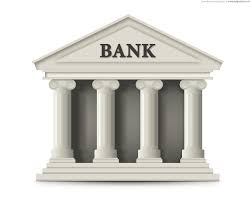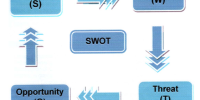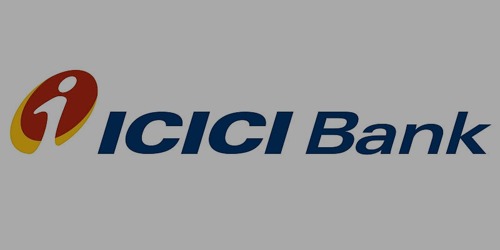List of banks in Bangladesh
The commercial banking system dominates Bangladesh’s financial sector. Bangladesh Bank is the Central Bank of Bangladesh and the chief regulatory authority in the sector. The banking system is composed of four state-owned commercial banks, five specialized development banks, thirty private commercial Banks and nine foreign commercial banks. The Nobel-prize winning Grameen Bank is a specialized micro-finance institution, which revolutionized the concept of micro-credit and contributed greatly towards poverty reduction and the empowerment of women in Bangladesh.
Contents[hide]
|
Central Bank
- Bangladesh Bank
Pursuant to Bangladesh Bank Order, 1972 the Government of Bangladesh reorganized the Dhaka branch of the State Bank of Pakistan as the central bank of the country, and named it Bangladesh Bank with retrospective effect from 16 December 1971.
State-owned Commercial Banks
The banking system of Bangladesh is dominated by the 3 Nationalized Commercial Banks , which together controlled more than 54% of deposits and operated 3388 branches (54% of the total) as of December 31, 2004.[1] The nationalized commercial banks are:
Specialised Bank of Bangladesh:
- Karmosangesthan Bank
- Bangladesh Krishi Bank
- Sonali Bank
- Janata Bank
- Rupali Bank
Private Commercial Banks
Private banks are the highest growth sector due to the dismal performances of government banks (above). They tend to offer better service and products.
- BRAC Bank Limited
- Eastern Bank Limited
- Dutch Bangla Bank Limited
- Dhaka Bank Limited
- Islami Bank Bangladesh Ltd
- Pubali Bank Limited
- Uttara Bank Limited
- IFIC Bank Limited
- National Bank Limited
- The City Bank Limited
- United Commercial Bank Limited
- NCC Bank Limited
- Prime Bank Limited
- SouthEast Bank Limited
- Al-Arafah Islami Bank Limited
- Social Islami Bank Limited
- Standard Bank Limited
- One Bank Limited
- Exim Bank Limited
- Mercantile Bank Limited
- Bangladesh Commerce Bank Limited
- Mutual Trust Bank Limited
- First Security Islami Bank Limited
- The Premier Bank Limited
- Bank Asia Limited
- Trust Bank Limited
- Shahjalal Islami Bank Limited
- Jamuna Bank Limited
- ICB Islami Bank
- AB Bank Limited
Foreign Commercial Banks
- Citibank
- HSBC
- Standard Chartered Bank
- Commercial Bank of Ceylon
- State Bank of India
- Habib Bank
- National Bank of Pakistan
- Woori Bank
- Bank Alfalah
Specialized Development Banks
Out of the specialized banks, two (Bangladesh Krishi Bank and Rajshahi Krishi Unnayan Bank) were created to meet the credit needs of the agricultural sector while the other two ( Bangladesh Shilpa Bank (BSB) & Bangladesh Shilpa Rin Sangtha (BSRS) are for extending term loans to the industrial sector.[1] The Specialized banks are:
- Grameen Bank
- The Dhaka Mercantile Co-operative Bank ltd
- Bangladesh Krishi Bank
- Bangladesh Development Bank Ltd
- Rajshahi Krishi Unnayan Bank
- BASIC Bank Limited (Bangladesh Small Industries and Commerce Bank Limited)
- Bangladesh Somobay Bank Limited(Cooperative Bank)
- Ansar VDP Unnyan Bank
Reference
- ^ a b Financial System > Banks , Bangladesh Bank
— BASIC Bank Limited (Bangladesh Small Industries and Commerce Bank Limited)
Scheduled Banks in Bangladesh
| Organisation | Web Link |
| AB Bank Limited | http://www.abbank.com.bd |
| Agrani Bank Limited | http://www.agranibank.org |
| Al-Arafah Islami Bank Limited | http://www.al-arafahbank.com/ |
| Bangladesh Commerce Bank Limited | http://www.bcbl-bd.com |
| Bangladesh Development Bank Limited | http://www.bdbl.com.bd |
| Bangladesh Krishi Bank | http://www.krishibank.org.bd |
| Bangladesh Shilpa Bank | http://www.shilpabank.gov.bd |
| Bangladesh Shilpa Rin Sangstha | http://www.bsrs.org.bd/ |
| Bank Al-Falah Limited | http://www.bankalfalah.com |
| Bank Asia Limited | http://www.bankasia-bd.com |
| BASIC Bank Limited | http://www.basicbanklimited.com |
| BRAC Bank Limited | http://www.bracbank.com |
| Citibank N.A | http://www.citi.com/domain/index.htm |
| Commercial Bank of Ceylon Limited | http://www.combankbd.com |
| Dhaka Bank Limited | http://www.dhakabank.com.bd |
| Dutch-Bangla Bank Limited | http://www.dutchbanglabank.com |
| Eastern Bank Limited | http://www.ebl-bd.com |
| EXIM Bank Limited | http://www.eximbankbd.com |
| First Security Islami Bank Limited | http://www.fsblbd.com |
| Habib Bank Ltd. | http://www.habibbankltd.com |
| ICB Islamic Bank Ltd. | http://www.icbislamic-bd.com/ |
| IFIC Bank Limited | http://www.ificbankbd.com |
| Islami Bank Bangladesh Ltd | http://www.islamibankbd.com |
| Jamuna Bank Ltd | http://www.jamunabankbd.com |
| Janata Bank Limited | http://www.janatabank-bd.com |
| Mercantile Bank Limited | http://www.mblbd.com |
| Mutual Trust Bank Limited | http://www.mutualtrustbank.com |
| National Bank Limited | http://www.nblbd.com |
| National Bank of Pakistan | http://www.nbp.com.pk |
| National Credit & Commerce Bank Ltd | http://www.nccbank.com.bd |
| One Bank Limited | http://www.onebankbd.com |
| Premier Bank Limited | http://www.premierbankltd.com |
| Prime Bank Ltd | http://www.prime-bank.com |
| Pubali Bank Limited | http://www.pubalibangla.com |
| Rajshahi Krishi Unnayan Bank | http://www.rakub.org.bd |
| Rupali Bank Limited | http://www.rupali-bank.com |
| Shahjalal Bank Limited | http://www.shahjalalbank.com.bd |
| Social Islami Bank Ltd. | http://www.siblbd.com |
| Sonali Bank Limited | http://www.sonalibank.com.bd |
| Southeast Bank Limited | http://www.sebankbd.com |
| Standard Bank Limited | http://www.standardbankbd.com |
| Standard Chartered Bank | http://www.standardchartered.com/bd |
| State Bank of India | http://www.statebankofindia.com |
| The City Bank Ltd. | http://www.thecitybank.com |
| The Hong Kong and Shanghai Banking Corporation. Ltd. | http://www.hsbc.com |
| Trust Bank Limited | http://www.trustbank.com.bd |
| United Commercial Bank Limited | http://www.ucbl.com |
| Uttara Bank Limited | http://www.uttarabank-bd.com |
| Woori Bank | http://www.wooribank.com |
Banking and Non Banking Financial Institution’s Basic Differences
Posted by BankInfo on Mon, Dec 13 201009:00 pm
In Bangladesh now different commercial banks and the non banking financial organizations are operating there business. And every organization now involved attracting the retail customers that means the middle income group people of the country. To draw their attention the sells persons of different organization try to knock every possible door. These activities of different organization increase the interest about this sector. As both commercial banks and the non financial institutes are in the market, so it makes confusion to the general people about the activities of these organizations. This article helps the customers to makes differentiate between these.
Banks, usually a corporation, that accepts deposits, makes loans, pays checks, and performs related services for the public. The Bank Holding Company Act of 1956 defines a bank as any depository financial institution that accepts checking accounts (checks) or makes commercial loans, and its deposits are insured by a federal deposit insurance agency. A bank acts as a middleman between suppliers of funds and users of funds, substituting its own credit judgment for that of the ultimate suppliers of funds, collecting those funds from three sources: checking accounts, savings, and time deposits; short-term borrowings from other banks; and equity capital. A bank earns money by reinvesting these funds in longer-term assets. A Commercial Bank invests funds gathered from depositors and other sources principally in loans. An investment bank manages securities for clients and for its own trading account. In making loans, a bank assumes both interest rate risk and credit risk.
The commercial banks are described now a day by many agents of economic development and social change. Their functions and roll are undergoing revolutionary changes client coverage and extended beyond imagination.
While many people believe that banks play only narrow roll in the economy taking deposit and making loans the modern banks has bad to adopt new roles to remain competitive and responsive to public needs. Baking’s principal roles today are as follows:
The intermediary role:
Transforming saving received primarily from household into credit for business firm and others in order to make investment in new building, equipment and other goods.
The payment role:
Carrying out payment for goods and services on behalf of their customers.
The guarantor role:
Standing behind their customers to pay off customer debts, when those customers are unable to pay.
The risk management role:
Assisting customer in preparing financially for the risk of lost to property and persons.
The saving / investment advisers’ role:
Aiding customers in fulfilling their long rang goals for a better life by building, managing, and protecting savings.
The safekeeping/certification of value role:
Safeguarding a customer’s valuables and appraising and certifying their true market
The agency role:
Acting on behalf of customers to manage and protect their property or issue and redeem their securities.
The policy role:
Saving as a conduit for govt. policy in attempting to regulate the growth of the economy and pursue social goals.
Non-bank financial institutions represent one of the most important parts of a financial system. In Bangladesh, NBFIs are new in the financial system as compared to banking financial institutions (BFIs). A total of 25 NBFIs are now working in the country. The NBFIs sector in Bangladesh consisting primarily of the development financial institutions, leasing enterprises, investment companies, merchant bankers etc. The financing modes of the NBFIs are long term in nature. Traditionally, our banking financial institutions are involved in term lending activities, which are mostly unfamiliar products for them. Inefficiency of BFIs in long-term loan management has already leaded an enormous volume of outstanding loan in our country. At this backdrop, in order to ensure flow of term loans and to meet the credit gap, NBFIs have immense importance in the economy. In addition, non-bank financial sector is important to increase the mobilization of term savings and for the sake of providing support services to the capital market.
The basic difference may include:-
- A Bank is an organization that accepts customer cash deposits and then provides financial services like bank accounts, loans, share trading account, mutual funds, etc.
- A NBFC (Non Banking Financial Company) is an organization that does not accept customer cash deposits but provides all financial services except bank accounts.
- A bank interacts directly with customers while an NBFI interacts with banks and governments
- A bank indulges in a number of activities relating to finance with a range of customers, while an NBFI is mainly concerned with the term loan needs of large enterprises
- A bank deals with both internal and international customers while an NBFI is mainly concerned with the finances of foreign companies
- A bank’s man interest is to help in business transactions and savings/investment activities while an NBFI’s main interest is in the stabilization of the currency
Besides the differences between the both commercial banks and the non banking financial institutions they play both for the development of the economic structure of the country. If the both play positively than it can be said that, the development of the country is sure.
Bangladesh The Banking System
http://www.photius.com/countries/bangladesh/economy/bangladesh_economy_the_banking_system/
Sources: The Library of Congress Country Studies; CIA World Factbook
Back to Bangladesh Economy
The banking system at independence consisted of two branch offices of the former State Bank of Pakistan and seventeen large commercial banks, two of which were controlled by Bangladeshi interests and three by foreigners other than West Pakistanis. There were fourteen smaller commercial banks. Virtually all banking services were concentrated in urban areas. The newly independent government immediately designated the Dhaka branch of the State Bank of Pakistan as the central bank and renamed it the Bangladesh Bank. The bank was responsible for regulating currency, controlling credit and monetary policy, and administering exchange control and the official foreign exchange reserves. The Bangladesh government initially nationalized the entire domestic banking system and proceeded to reorganize and rename the various banks. Foreign-owned banks were permitted to continue doing business in Bangladesh. The insurance business was also nationalized and became a source of potential investment funds. Cooperative credit systems and postal savings offices handled service to small individual and rural accounts. The new banking system succeeded in establishing reasonably efficient procedures for managing credit and foreign exchange. The primary function of the credit system throughout the 1970s was to finance trade and the public sector, which together absorbed 75 percent of total advances.
The government’s encouragement during the late 1970s and early 1980s of agricultural development and private industry brought changes in lending strategies. Managed by the Bangladesh Krishi Bank, a specialized agricultural banking institution, lending to farmers and fishermen dramatically expanded. The number of rural bank branches doubled between 1977 and 1985, to more than 3,330. Denationalization and private industrial growth led the Bangladesh Bank and the World Bank to focus their lending on the emerging private manufacturing sector. Scheduled bank advances to private agriculture, as a percentage of sectoral GDP, rose from 2 percent in FY 1979 to 11 percent in FY 1987, while advances to private manufacturing rose from 13 percent to 53 percent.
The transformation of finance priorities has brought with it problems in administration. No sound project-appraisal system was in place to identify viable borrowers and projects. Lending institutions did not have adequate autonomy to choose borrowers and projects and were often instructed by the political authorities. In addition, the incentive system for the banks stressed disbursements rather than recoveries, and the accounting and debt collection systems were inadequate to deal with the problems of loan recovery. It became more common for borrowers to default on loans than to repay them; the lending system was simply disbursing grant assistance to private individuals who qualified for loans more for political than for economic reasons. The rate of recovery on agricultural loans was only 27 percent in FY 1986, and the rate on industrial loans was even worse. As a result of this poor showing, major donors applied pressure to induce the government and banks to take firmer action to strengthen internal bank management and credit discipline. As a consequence, recovery rates began to improve in 1987. The National Commission on Money, Credit, and Banking recommended broad structural changes in Bangladesh’s system of financial intermediation early in 1987, many of which were built into a three-year compensatory financing facility signed by Bangladesh with the IMF in February 1987.
One major exception to the management problems of Bangladeshi banks was the Grameen Bank, begun as a government project in 1976 and established in 1983 as an independent bank. In the late 1980s, the bank continued to provide financial resources to the poor on reasonable terms and to generate productive self-employment without external assistance. Its customers were landless persons who took small loans for all types of economic activities, including housing. About 70 percent of the borrowers were women, who were otherwise not much represented in institutional finance. Collective rural enterprises also could borrow from the Grameen Bank for investments in tube wells, rice and oil mills, and power looms and for leasing land for joint cultivation. The average loan by the Grameen Bank in the mid-1980s was around Tk2,000 (US$65), and the maximum was just Tk18,000 (for construction of a tin-roof house). Repayment terms were 4 percent for rural housing and 8.5 percent for normal lending operations.
The Grameen Bank extended collateral-free loans to 200,000 landless people in its first 10 years. Most of its customers had never dealt with formal lending institutions before. The most remarkable accomplishment was the phenomenal recovery rate; amid the prevailing pattern of bad debts throughout the Bangladeshi banking system, only 4 percent of Grameen Bank loans were overdue. The bank had from the outset applied a specialized system of intensive credit supervision that set it apart from others. Its success, though still on a rather small scale, provided hope that it could continue to grow and that it could be replicated or adapted to other development-related priorities. The Grameen Bank was expanding rapidly, planning to have 500 branches throughout the country by the late 1980s.
Beginning in late 1985, the government pursued a tight monetary policy aimed at limiting the growth of domestic private credit and government borrowing from the banking system. The policy was largely successful in reducing the growth of the money supply and total domestic credit. Net credit to the government actually declined in FY 1986. The problem of credit recovery remained a threat to monetary stability, responsible for serious resource misallocation and harsh inequities. Although the government had begun effective measures to improve financial discipline, the draconian contraction of credit availability contained the risk of inadvertently discouraging new economic activity.
Foreign exchange reserves at the end of FY 1986 were US$476 million, equivalent to slightly more than 2 months worth of imports. This represented a 20-percent increase of reserves over the previous year, largely the result of higher remittances by Bangladeshi workers abroad. The country also reduced imports by about 10 percent to US$2.4 billion. Because of Bangladesh’s status as a least developed country receiving concessional loans, private creditors accounted for only about 6 percent of outstanding public debt. The external public debt was US$6.4 billion, and annual debt service payments were US$467 million at the end of FY 1986.
Data as of September 1988
Currency Fluctuation
At independence the value of the taka, Bangladesh’s unit of currency, was set between 7.5 and 8.0 to US$1. With the exception of FY 1978, the taka’s value relative to the dollar declined every year from 1971 through the end of 1987. To help offset this phenomenon, Bangladesh first used the compensatory financing facility of the International Monetary Fund (IMF–see Glossary) in FY 1974. Despite the increasing need for assistance, the Mujib government was initially unwilling to meet the IMF’s conditions on monetary and fiscal policy. By FY1975, however, the government revised its stance, declaring a devaluation of the taka by 56 percent and agreeing to the establishment by the World Bank of the Bangladesh Aid Group (see Foreign Assistance, this ch.). Between 1980 and 1983, the taka sustained a decline of some 50 percent because of a deterioration in Bangladesh’s balance of payments. Between 1985 and 1987, the taka was adjusted in frequent incremental steps, stabilizing again around 12 percent lower in real terms against the United States dollar, but at the same time narrowing the difference between the official rate and the preferential secondary rate from 15 percent to 7.5 percent. Accompanying this structural adjustment was an expansion in the amount of trade conducted at the secondary rate, to 53 percent of total exports and 28 percent of total imports. In mid- 1987, the official rate was relatively stable, approaching Tk31 to US$1.
Bangladesh-The Banking System
Bangladesh Index
The banking system at independence consisted of two branch offices of the former State Bank of Pakistan and seventeen large commercial banks, two of which were controlled by Bangladeshi interests and three by foreigners other than West Pakistanis. There were fourteen smaller commercial banks. Virtually all banking services were concentrated in urban areas. The newly independent government immediately designated the Dhaka branch of the State Bank of Pakistan as the central bank and renamed it the Bangladesh Bank. The bank was responsible for regulating currency, controlling credit and monetary policy, and administering exchange control and the official foreign exchange reserves. The Bangladesh government initially nationalized the entire domestic banking system and proceeded to reorganize and rename the various banks. Foreign-owned banks were permitted to continue doing business in Bangladesh. The insurance business was also nationalized and became a source of potential investment funds. Cooperative credit systems and postal savings offices handled service to small individual and rural accounts. The new banking system succeeded in establishing reasonably efficient procedures for managing credit and foreign exchange. The primary function of the credit system throughout the 1970s was to finance trade and the public sector, which together absorbed 75 percent of total advances.
The government’s encouragement during the late 1970s and early 1980s of agricultural development and private industry brought changes in lending strategies. Managed by the Bangladesh Krishi Bank, a specialized agricultural banking institution, lending to farmers and fishermen dramatically expanded. The number of rural bank branches doubled between 1977 and 1985, to more than 3,330. Denationalization and private industrial growth led the Bangladesh Bank and the World Bank to focus their lending on the emerging private manufacturing sector. Scheduled bank advances to private agriculture, as a percentage of sectoral GDP, rose from 2 percent in FY 1979 to 11 percent in FY 1987, while advances to private manufacturing rose from 13 percent to 53 percent.
The transformation of finance priorities has brought with it problems in administration. No sound project-appraisal system was in place to identify viable borrowers and projects. Lending institutions did not have adequate autonomy to choose borrowers and projects and were often instructed by the political authorities. In addition, the incentive system for the banks stressed disbursements rather than recoveries, and the accounting and debt collection systems were inadequate to deal with the problems of loan recovery. It became more common for borrowers to default on loans than to repay them; the lending system was simply disbursing grant assistance to private individuals who qualified for loans more for political than for economic reasons. The rate of recovery on agricultural loans was only 27 percent in FY 1986, and the rate on industrial loans was even worse. As a result of this poor showing, major donors applied pressure to induce the government and banks to take firmer action to strengthen internal bank management and credit discipline. As a consequence, recovery rates began to improve in 1987. The National Commission on Money, Credit, and Banking recommended broad structural changes in Bangladesh’s system of financial intermediation early in 1987, many of which were built into a three-year compensatory financing facility signed by Bangladesh with the IMF in February 1987.
One major exception to the management problems of Bangladeshi banks was the Grameen Bank, begun as a government project in 1976 and established in 1983 as an independent bank. In the late 1980s, the bank continued to provide financial resources to the poor on reasonable terms and to generate productive self-employment without external assistance. Its customers were landless persons who took small loans for all types of economic activities, including housing. About 70 percent of the borrowers were women, who were otherwise not much represented in institutional finance. Collective rural enterprises also could borrow from the Grameen Bank for investments in tube wells, rice and oil mills, and power looms and for leasing land for joint cultivation. The average loan by the Grameen Bank in the mid-1980s was around Tk2,000 (US$65), and the maximum was just Tk18,000 (for construction of a tin-roof house). Repayment terms were 4 percent for rural housing and 8.5 percent for normal lending operations.
The Grameen Bank extended collateral-free loans to 200,000 landless people in its first 10 years. Most of its customers had never dealt with formal lending institutions before. The most remarkable accomplishment was the phenomenal recovery rate; amid the prevailing pattern of bad debts throughout the Bangladeshi banking system, only 4 percent of Grameen Bank loans were overdue. The bank had from the outset applied a specialized system of intensive credit supervision that set it apart from others. Its success, though still on a rather small scale, provided hope that it could continue to grow and that it could be replicated or adapted to other development-related priorities. The Grameen Bank was expanding rapidly, planning to have 500 branches throughout the country by the late 1980s.
Beginning in late 1985, the government pursued a tight monetary policy aimed at limiting the growth of domestic private credit and government borrowing from the banking system. The policy was largely successful in reducing the growth of the money supply and total domestic credit. Net credit to the government actually declined in FY 1986. The problem of credit recovery remained a threat to monetary stability, responsible for serious resource misallocation and harsh inequities. Although the government had begun effective measures to improve financial discipline, the draconian contraction of credit availability contained the risk of inadvertently discouraging new economic activity.
Foreign exchange reserves at the end of FY 1986 were US$476 million, equivalent to slightly more than 2 months worth of imports. This represented a 20-percent increase of reserves over the previous year, largely the result of higher remittances by Bangladeshi workers abroad. The country also reduced imports by about 10 percent to US$2.4 billion. Because of Bangladesh’s status as a least developed country receiving concessional loans, private creditors accounted for only about 6 percent of outstanding public debt. The external public debt was US$6.4 billion, and annual debt service payments were US$467 million at the end of FY 1986.
















